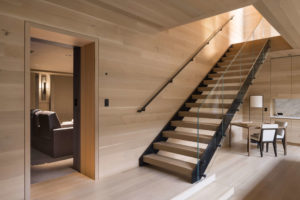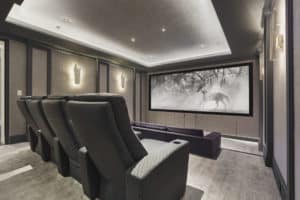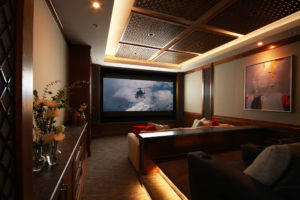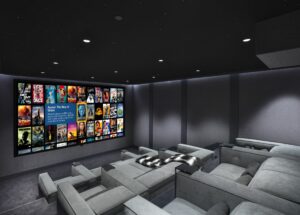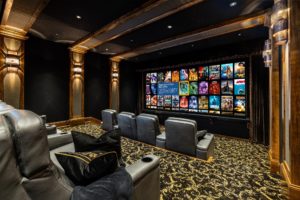How Silence Enhances the Audio and Visual Fear Factor in A Quiet Place
It’s Time to Uncork the Cinema Sommelier Inaugural Review
If silence rules in A Quiet Place, this movie breaks all the rules, delivering a multitude of amazing demo scenes. The movie masterfully highlights the true impact sound has on storytelling. The irony: it’s the absence of sound that makes this movie great. The lack of sound, in some cases, allows the image to deliver a false sense of security. When the sound kicks in, the object-based Dolby Atmos brings precision sound elements to all your speakers. And the use of panning surrounds you so effectively that you are in every scene next to the characters.
“This was our approach and goal for A QUIET PLACE. To use sound, and the absence of it, to create the most dramatic and visceral audience experience, to hear in a new way.”
Erik Aadahl
Pair that with an image so pristine, it’s like looking through a window into the Abbott family’s horrific situation. When played in 4K UHD with HDR, the movie has moments of such detailed peak brightness, it will put any display technology through its paces.
Preferred Pairing: Petit Verdot, the “quiet” grape in the Bordeaux blend. One of the five grapes allowed but never featured as the main varietal in Bordeaux. When unleashed, the wild nature of intense violet aromas and flavors takes you on as many twists and turns as the movie. With a finish that is like being wrapped up in a warm and cozy Bordeaux-style blanket, it’s a great varietal to ease you into the story.
When to Consume: An instant classic, this terrorizing title not only pairs well with the suggested Petit Verdot, but makes for a nice holiday evening adventure with a loved one (or family of loved ones) to hold onto tight during every fright. And if you are feeling frisky, make it a double . . . , feature that is, with A Quiet Place Part II also available on Kaleidescape.
Body of Work
A Quiet Place, starring the husband-and-wife-team of actor-director John Krasinski (as Lee Abbott) alongside Emily Blunt (as Evelyn Abbott), is based on an interesting premise: a future world that has been ravished by mysterious creatures that are highly sensitive to sound, and attack anything that makes the slightest noise. In this postapocalyptic setting, the couple and their children must stay completely silent and avoid making any sound in daily life, or these creatures will quickly emerge to tear them to pieces.
Consequently, the characters must muffle all noises and rely on sign language to stay alive. You can imagine how difficult this would make daily activities, like accidentally knocking a bottle of pills off a store shelf, as well as monumental occasions such as childbirth.
The movie’s pace alternates between slow but typical family activities—board games, hikes through the woods, meals, teenage angst—and suspenseful moments when any sound is made or about to occur. Of course, there are jump-scares when the creatures attack. This movie is more suspense and family drama than horror, although there are elements of gore and horrific plot twists. The plot twists are emotionally gripping and filled with sudden scares.
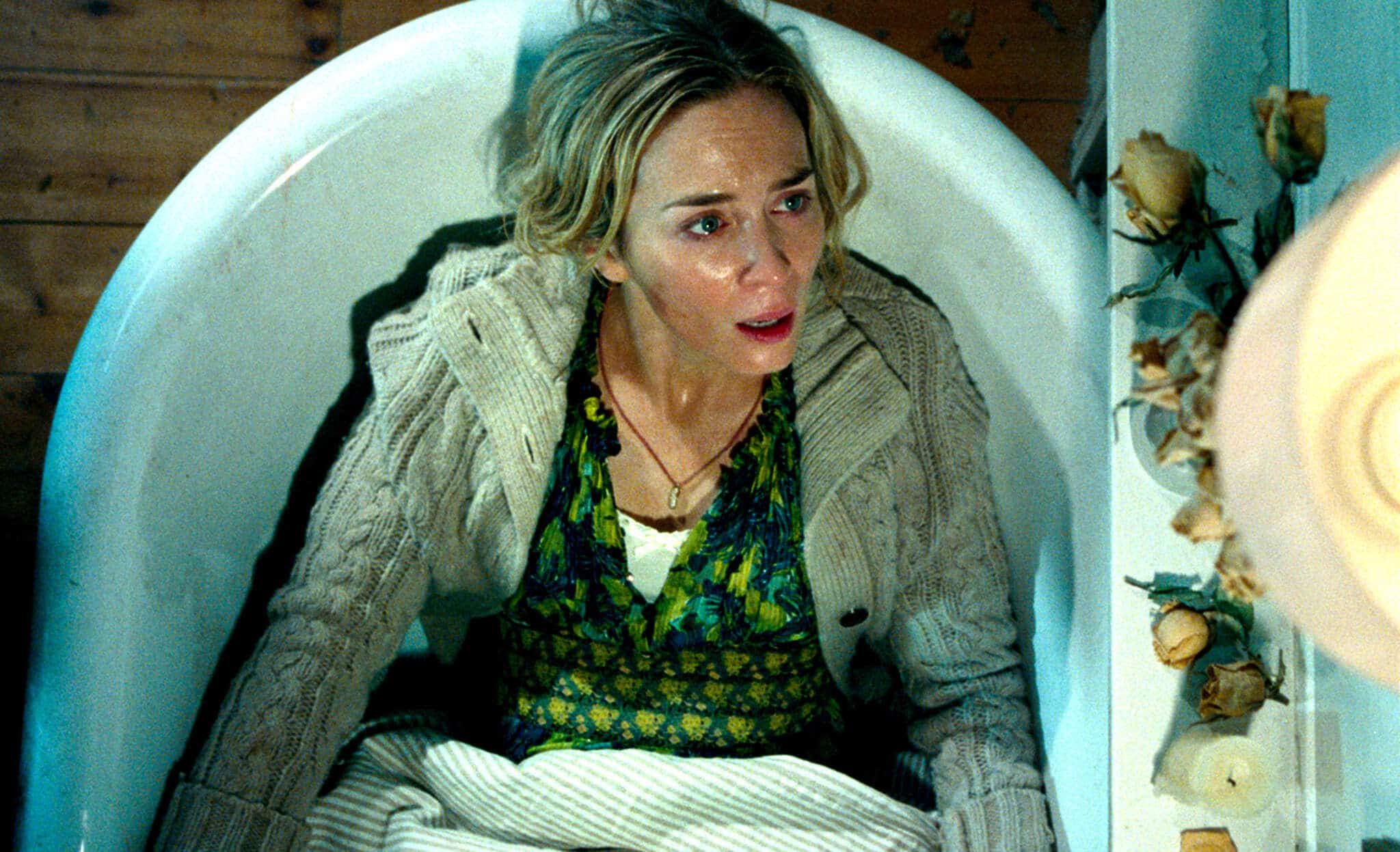
Visually, the scenery is bucolic, staged in upstate New York. Cinematographer Charlotte Bruus Christensen also shot the movie on 35 mm film instead of digital, and the result is a movie that comes across as less crisp than a digitally enhanced action film, but at the same time, more nuanced and softer. Lanterns in a dark basement, a muted palette of decaying fall leaves, and the fading colors of an abandoned town appear natural, balanced, and more lifelike than what you would typically see in a saturated and overly bright 4K film.
The movie’s premise means you are not going to hear a lot of anything for most of the film. In fact, it takes around thirty minutes before you hear any of the actors speak at an audible level, and only because the utterance is masked from the monsters by the pounding sound of a nearby waterfall. Another character is deaf, and the director adds tension in some scenes by further reducing the sounds you hear when the perspective switches to her point of view.
“Sound is half of our cinematic perception, and can put the viewer, and listener, directly into the shoes of any character.”
Erik Aadahl
With so few scenes with talking or any noise whatsoever, your attention is drawn to every small sound throughout the film. In some ways, sounds themselves become characters in the film, as jump-scare-inducing as the creatures. Noises you would not notice in other movies—bare feet walking on sand, hands gliding over a steering wheel, the creak of floorboards—add layers of complexity to scenes and really pop.
A Quiet Place is a movie that sticks with you after the credits roll. Thoughts about how you would have done things differently—Why live in a quiet area where any sound you make will instantly attract the creatures’ attention, instead of a noisy place like the waterfall? How can you possibly keep a baby quiet? —will fill your head for days.
The movie’s ending comes soon after the characters realize a critical insight that viewers likely picked up on earlier in the film. While a resolution to the plot occurs with the final scene, audiences will likely have many questions as to what happens next. Thankfully, the film’s critical and commercial success ensured a sequel, which debuted in 2020 and is also available on Kaleidescape if you are down for a double feature.
Demo Notes
Like fine wine, there are always moments that shine in a movie, scenes that stand out in our A/V sensory palate. In this section of the review, we will be calling upon industry experts to contextualize, like tasting notes, what makes these scenes demo worthy.
For A Quiet Place, we asked Sean Skelley, CEO of Definitive Audio, to share some dealer “demo notes” and personal insights. He often uses the following scenes to showcase the latest A/V gear, ensuring the technology delivers an optimized performance.
Scene 1: Trouble with Toys (8:25–10:07)
The lossless Dolby Atmos mix truly sets the stage for this scene as you hear the leaves on the trees softly crackle in the cool fall breeze. It is a nice complement to the crispness of the visual elements of the scene. Dusk is upon the Abbott family, and you see some amazing contrast on their faces as the sunlight glistens through the forest. The detail is so clear on Kaleidescape that you can even see each ray of sunlight hit the dust particles in the air with a ghostlike hue. The image puts you at ease, as if this were a family taking an ordinary evening stroll. Then the unexpected sound of a toy plane goes off. But what I like most about this scene is not the climax but how it unveils a new element to the story, from the daughter’s perspective, a muffled yet empty void that indicates she is hearing impaired. The scene displays both great visual and audio dynamic range that makes it choice demo content.
Scene 2: Monopoly (18:55–21:32)
A properly calibrated display system delivering a 4K UHD HDR image brings warmth and comfort into the scene where it feels like a family playing Monopoly on an ordinary game night. The amazing quality of the image coming from the Kaleidescape system places emphasis on elements you might not typically notice. The warm glow of the lantern’s flame delivers foreshadowing, and the candle-lit room brings comfort. Then silence sets the stage for a clever, yet overly embellished, use of low-frequency effects as the boy knocks the lantern over. This is quickly followed by an acute sound of flames that seem as if they are spilling out of the display into your living room. As you wait in anticipation, deafening silence settles back in, setting up an elegant use of Dolby Atmos overheads as birds scatter from above into the distance. Then silence. Dead silence. That is all I will reveal about the scene, but every time I demo it, the viewer has a visceral reaction. And that is exactly what you want your entertainment system to do: suspend your disbelief and make you feel as if you are participating in the story unfolding on the screen.
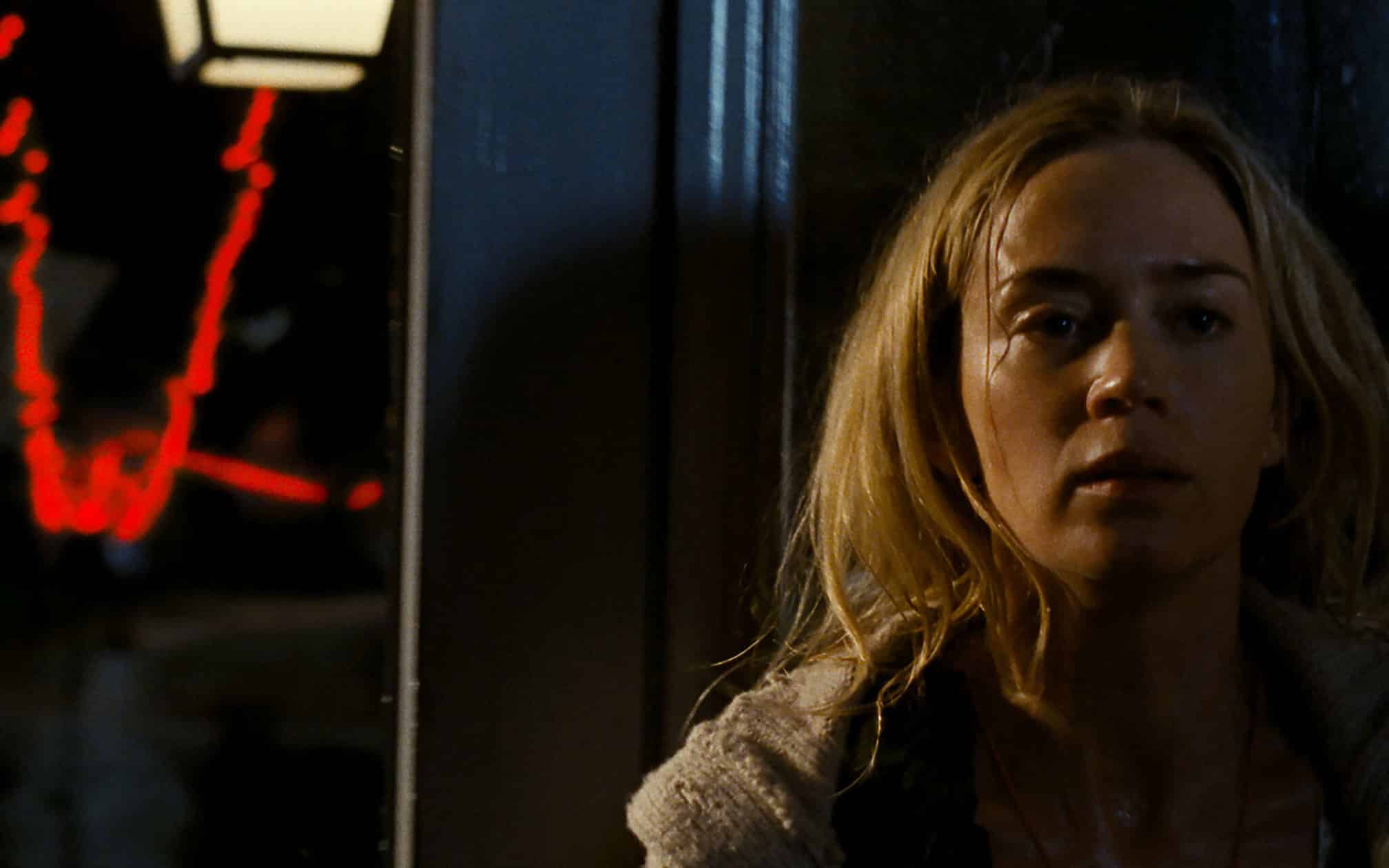
Scene 3: Red Lights (44:45–52:15)
You can virtually feel the movement of the creatures circling around you, clambering, clawing, and hunting you down. This is the power of true lossless-quality audio that only Kaleidescape offers, delivering lifelike quality sound that turns your sound system into a commercial cinema experience. When the red lights go on, they are bright in HDR, signaling a sense of urgency as they glow off Lee Abbott’s face. When you have a night scene like this in a movie with no dialogue, the character’s face tells the story. When I demo this scene, I like to point out how you can see every nuance of each character’s face with the amazing contrast it delivers to any 4K UHD HDR display. And when the fireworks go off, the marriage of colors displayed against the black sky complements the use of Dolby Atmos raining down from above. It’s a great scene that truly demonstrates how a home cinema can look and sound when you have premium-quality content at the source.
Artist Insight
Every exceptional wine review brings a little something extra to the table, be it personal insights from the master winemaker or the team of vintners who helped produce the final product. The artistry that goes into moviemaking deserves the same recognition. In this section of the review, we are calling upon “film vintners” to bring some added texture to what went into creating the artistic flavors of the film.
For our inaugural review, we asked supervising sound editor and sound designer Erik Aadahl, an Academy Award Nominee for Best Achievement in Sound Editing for A Quiet Place, to provide some artist insights.
“Cinema has the unique ability to place the audience into the experience of another person. Sound is half of our cinematic perception, and can put the viewer, and listener, directly into the shoes of any character. This was our approach and goal for A QUIET PLACE. To use sound, and the absence of it, to create the most dramatic and visceral audience experience, to hear in a new way. Kaleidescape technology opens the door for this pure sonic power in the very best of home theaters.”
Erik Aadahl

